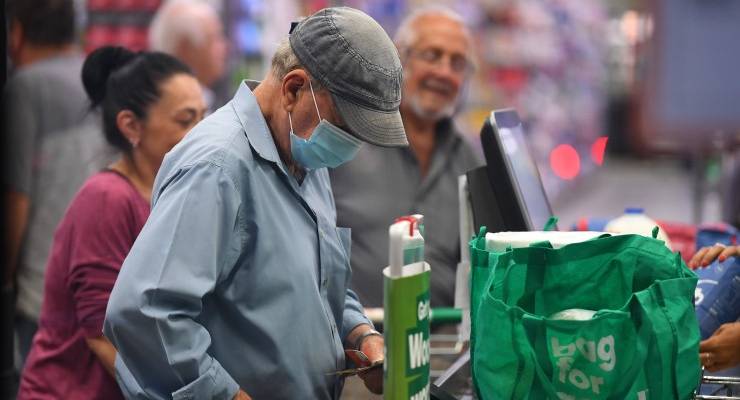
This morning the head of the World Health Organisation (WHO) warned that countries relaxing their coronavirus restrictions too quickly could cause a surge in cases and a return to lockdown.
In Italy, modelling suggests that even a small “return to normal” with just a 20% increase in mobility could trigger a second wave which might claim more lives than the first.
There are three factors that could cause a second wave of COVID-19 in Australia. Here’s what they are.
Schools, work and winter
There’s no strict definition around what constitutes a wave, and what constitutes a second cluster, Nic Geard, a senior lecturer at the University of Melbourne’s School of Computing and Information Systems and a senior research fellow at the Doherty Institute for Infection and Immunity, told Crikey.
“There’s a typical flu season that tails away, then there’s the second wave — a resurgence of transmission after getting control of the first wave,” he said.
As with influenza trends, a resurgence in coronavirus is likely to be caused by a change in conditions. “This could be the weather, social patterns, or school terms,” Geard said.
“Our understanding of the disease is that it’s spread amongst adults in close proximity. The biggest risk is where that’s occurring.” Opening up offices or pubs presents more of a risk than national parks, he said.
Within Australia, each state is in a different stage of epidemiology. As different restrictions are eased in different states, data can be used to predict scenarios in other areas.
“The question is where our modelling should be focused — looking at what we start to ease, what is the best and safest route, and where the cases are localised around geographic areas,” Geard said.
Ongoing, undocumented transmission
Ongoing transmission is the silent driver behind new clusters and waves, Dr Abrar Chughtai, an epidemiologist at the University of UNSW, told Crikey.
“In Australia, we’re planning on elimination like New Zealand — after a few weeks, we could get that,” he said. But, he added, the veracity of the second wave will depend on how many cases are circulating in the community — something no country has a really good grasp on.
This is exactly what happened in Singapore, where uncontrolled and undocumented transmission of coronavirus across migrant workers caused coronavirus to surge to more than 20,000 cases after the country initially had good control over transmission.
“We don’t know how many cases we’re missing. We know 25% of people are asymptomatic and many more only have mild symptoms, so we don’t know how many more cases are out there,” Chughtai said. Opening our borders would also drive transmission rates.
While Australia currently has controlled transmission, where each person’s transmission can be tracked, this could quickly change.
“This is a new virus. At this stage, we don’t know whether asymptomatic people have higher rates of transmission, or how winter affects the virus,” Chughtai said. Only recently the possibility was raised that the virus could be spread by airborne transmission.
Importantly though, Chughtai believes the world is becoming more and more prepared. “We have better technology, ICU and ventilator numbers and the global community is prepared,” he said.
Complacency
So far, Australia has been very successful in controlling COVID-19, Ben Phillips, a population ecologist at the University of Melbourne, told Crikey. But the risk is far from over.
“The problem is the threat hasn’t passed … we’ve dealt with the easy cases. What’s left is the sneaky community transmission which is going on slowly. As people start to relax, new transmission rates will start to increase,” he said.
Until we’ve found every single case of coronavirus in the community, through widespread testing and contact tracing, there is still a risk.
“If we relax in the face of unidentified cases in the community, we have a higher chance of a second wave,” Phillips said.








If Professor Wickramasinghe is correct we should expect a second wave of the virus in about July. https://www.youtube.com/watch?v=o5LZ8YtCNz0
If Professor Wickramasinghe is correct then we should expect a second wave In Australia about July.
https://www.youtube.com/watch?v=o5LZ8YtCNz0
The most likely triggers seem seem likely to be Morrison’s lack of intellect and the Murdoch media’s lies.
We also have a large pool of migrant workers like Singapore, who our govt also chooses to ignore in welfare terms, so they may be our time bomb.
At least ours aren’t in 24 to a room dormitories.
Some of ours live in paddocks ,don’t they ?
It’s stuff like this that makes me wonder why the unnecessary risk of rushing back to work when we could possibly eliminate the virus by just waiting a relatively short time.
Instead, it could be a second wave that causes an even bigger outbreak and we’re all back in isolation.